Fusion puts on 40th annual spring show
BY ISABEL HAHN STAFF WRITER

Fusion Dance Company, Brown’s oldest student-run dance group, put on their 40th annual spring show “Mirage” this past weekend. In a packed auditorium in Alumnae Hall, the group’s 21 members showcased their expertise in a diverse range of dance styles — including contemporary, jazz and hip-hop — by performing original choreographed and arranged pieces.
Serving as a send-off for the company’s graduating seniors, “Mirage” opened with an emotion-charged performance to “Let Go” by Frou Frou, followed by a welcome speech by members Mia Koenig and Mia-Nathalie Pridgen ’26.
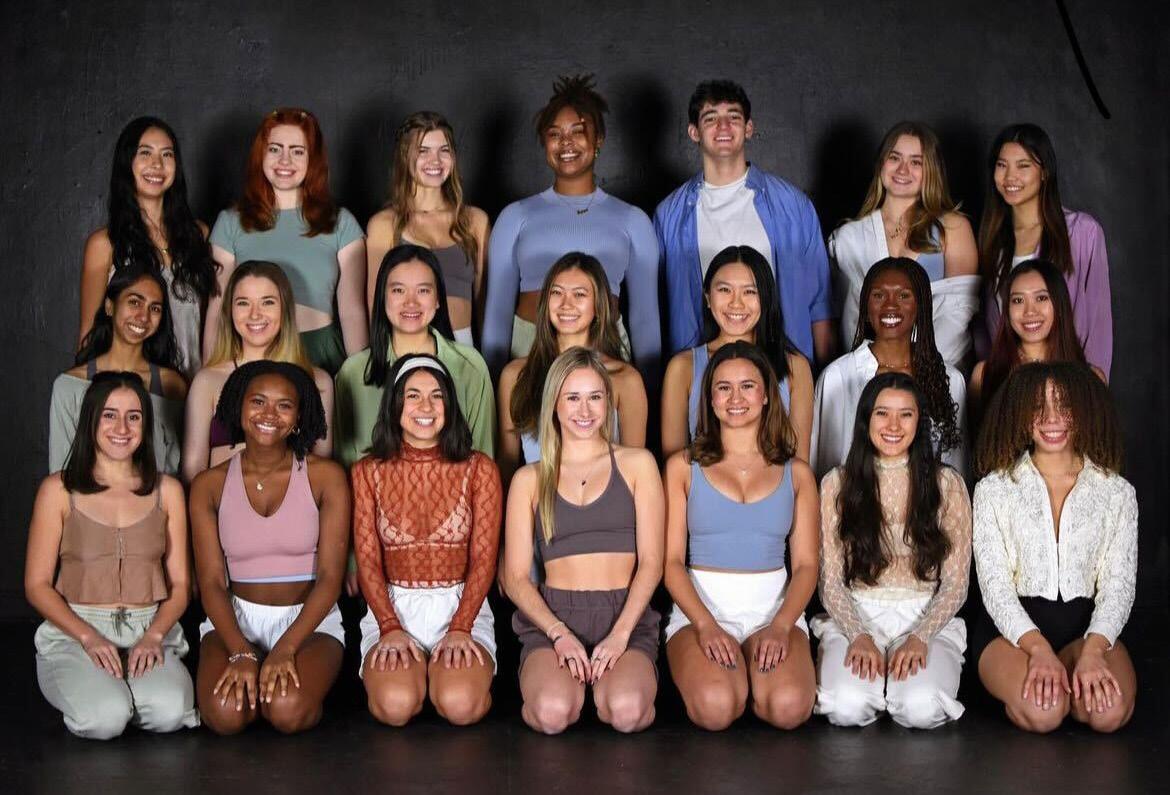
Koenig shared Fusion’s “herstory” — tracing the company’s roots back to Paula Franklin ’87 and her 1983 performance of an original choreographed
piece. Since its founding, Fusion has “strived to uphold (its) tradition of a multi-cultural, multi-ethnic group of dancers” with no constraints on “body shape, size … or choreography,” Koenig said.
Before the show started, Koenig and Pridgen encouraged audience members to convey their support vocally, telling them that Fusion’s dancers “feed off of your energy.”
“The louder you cheer,” Koenig said,

Men’s basketball defeats Columbia Lions 84-73
Bruno was quickly energized by a Lilly Jr. three-pointer, sparking a 12-0 run to lead 13-6.
“the better (we) dance.”
The performance showcased a diverse array of dance styles and music selections that conveyed a wide range of tones and emotions. Vibrant lighting choices conveyed transitions in moods and themes, from fierce reds to more mellow greens and blues.
The show highlighted the company’s camaraderie through a cohesive
SPORTS
BY ABE WYETT STAFF WRITEROn Saturday afternoon, Bruno (1412, 7-6 Ivy) earned a hard-fought 84-73 victory against the Columbia Lions (7-21, 2-11 Ivy) in New York. With the win, Brown is fourth in the Ivy League, a position it needs to maintain to secure an Ivy League postseason spot — and possibly a March Madness one.
“It was a great win for us,” said Head Coach Mike Martin ’04 in a statement to Brown Athletics. “Obviously, it was not easy. We didn’t expect it to be easy. But we’re really happy for our players. They stepped up and found a way.”
Aaron Cooley ’25, Nana Owusu-Anane ’25, Kino Lilly Jr. ’25, Dan Friday ’24 and Paxson Wojcik ’23 lined the circle for tip off. Although Columbia jumped out to a 6-1 lead,
Showing off his passing ability, Owusu-Anane found Cooley for a baseline dunk to take a 19-11 lead with 11:04 left in the half. “We both understand what we bring to the table so there’s a mutual trust between us that allows for our games to compliment one another,” Cooley wrote in a message to The Herald.
Brown led by as much as 14 in the first half, but a Columbia run brought the Lions within three points in the final minutes of the half. Bruno entered halftime leading 40-35.
Bruno held a marginal lead for the first seven minutes of the second half, but Columbia tied the game 50-50 with 13:04 left in the contest.
In a highlight play, Wojcik inbounded the ball to Friday through a defender’s legs, leading to a one-handed slam dunk.
“I knew Dan was going to be open and I anticipated that, but my defender had good size and the only way to get Dan the ball was a bounce pass through his legs, so it just came to me and I
Smiley, stakeholders discuss future of PPSD
METRO Officials share plans, concerns for education under new administration
BY STELLA CHEN SENIOR STAFF WRITERDuring his 2022 campaign, Mayor Brett Smiley promised to make education a key issue for his administration.
The state took over control of the Providence Public School District after a 2019 report from Johns Hopkins University found systemic underperformance. The takeover, which was extended due to the pandemic, is expected to be completed by the 202627 school year, The Herald previously reported. After this, PPSD will return to municipal control.
Although PPSD is primarily regulated by the Rhode Island Department of Education, Patricia Socarras, director of communications for the City of
Providence, wrote in an email to The Herald that “the Mayor is in control of key parts of our local education system.”
The Mayor’s office has helped in the development of activities and summer enrichment programs dedicated to “academic and youth leadership development opportunities” and worked with PPSD’s superintendent and the state commissioner of education on the Turnaround Action Plan, the state’s strategy to revamp Providence’s education system.
Conflict over state control
Smiley took office during a tumultuous era for PPSD, which included “contentious” School Board meetings and an investigation into toxic workplace allegations, The Providence Journal reported last December.
Victor Morente, RIDE communications director, cited the Hopkins report in an email to The Herald, detailing the challenges that PPSD faces, “including a lack of profession-
Squash dominates club championships
BY LINUS LAWRENCE SPORTS EDITORBrown men’s and women’s squash cruised to victory at club nationals in Philadelphia last weekend, winning championships and earning their final victories Feb. 19.
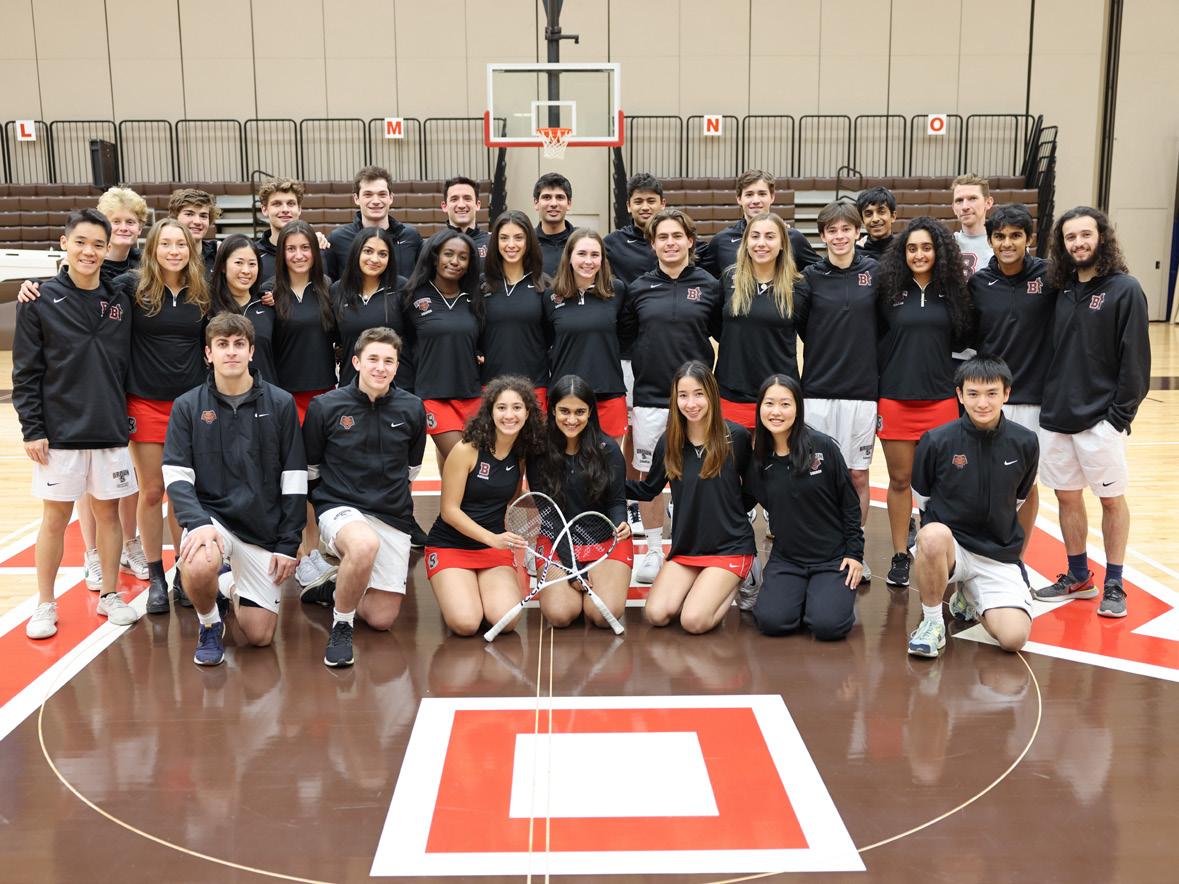
The competition marked the first time Brown squash played in the club nationals tournament since being demoted from varsity status in 2020 as part of the Excellence in Brown Athletics initiative. The squash teams were given a one-year exemption that allowed them to still participate in the varsity tournament last season. But the College Squash Association decided not to extend that exemption after conversations with the team before the new season, according to Head Coach Arthur Gaskin. Players told The Herald they were disappointed by the decision, hoping that the teams’ abilities would be recognized and their shift in eligibility would be delayed another year.
“We were definitely pretty disap-
pointed when we found out that we would play in club nationals,” said women’s squash captain Kate Dowling ’23. “We’ve been playing against a lot of varsity teams throughout our season and have been getting pretty good results against them.”
“We can’t control if we’re in club nationals or varsity nationals, but what we can control is how we go about our day-to-day business and how we go about our approach and our mindset,” Gaskin said.
Faced with exclusion from their previous level of competition, several players said they went into the tournament with a clear, unified mission.
“We wanted to prove that we belong in varsity nationals, even if they don’t let us play there,” said men’s squash captain Chotoo Amin ’23. “That’s what really drove us this weekend.”
Both teams entered the weekend ranked as the No. 1 seed in their respec-
SPORTS Bruno sits fourth in Ivy League with one game against Yale remaining in regular season
‘Mirage’ features mixture of contemporary, jazz, hip-hop pieces
Men’s, women’s teams thrive in first club tournament following demotion from varsityCOURTESY OF KATE DOWLING Several players from the teams will be returning to Philadelphia for the national doubles championships and individuals championships. COURTESY OF ALICIA JOO / FUSION DANCE COMPANY Since its founding, Fusion has “strived to uphold (its) tradition of a multi-cultural, multi-ethnic group of dancers,” Mia Koenig said.
Taubman Center program researches shifting election policies, turnout
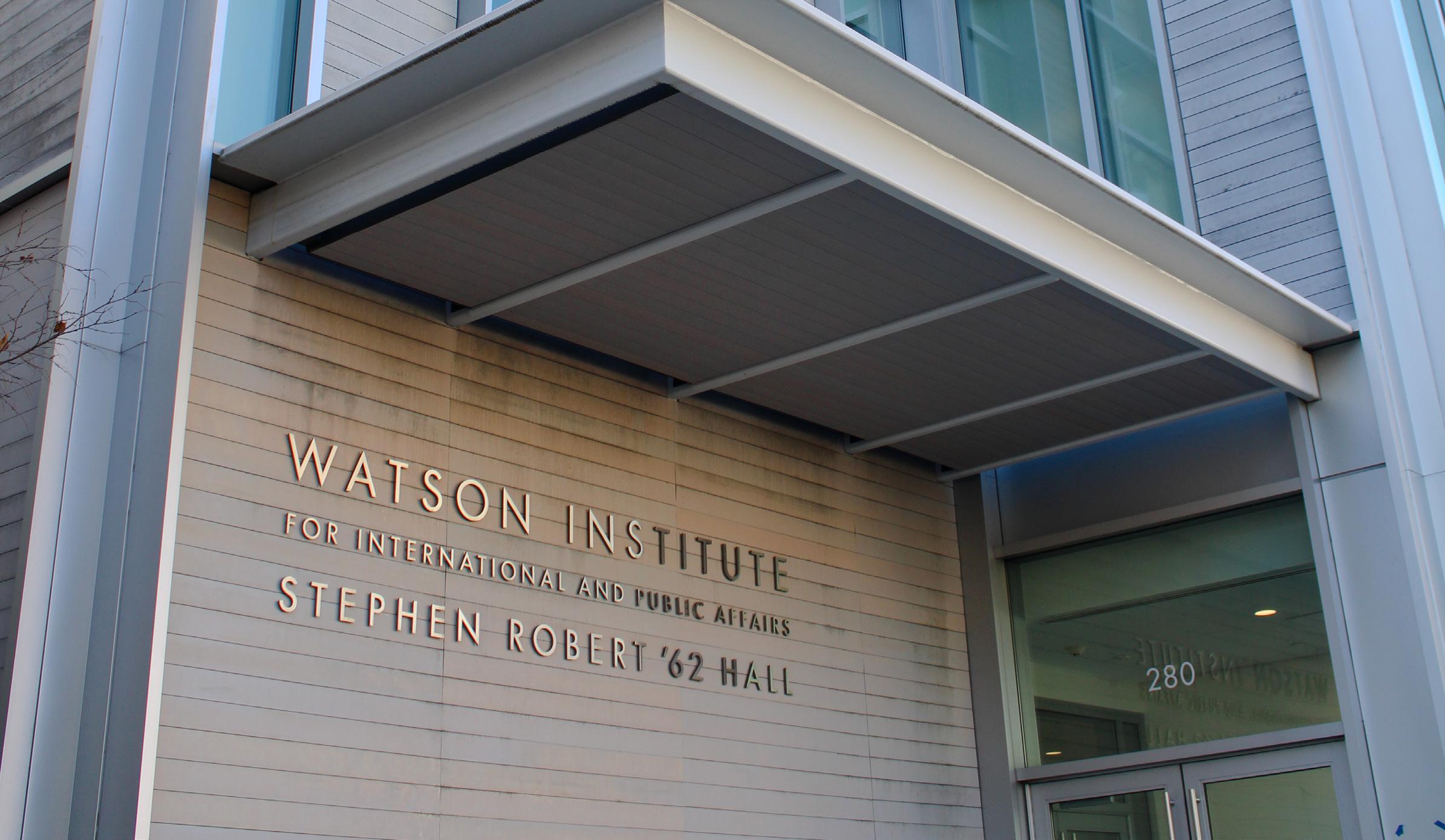
Student-led initiative launched last semester studies voting rights, demographics
BY OWEN DAHLKAMP SENIOR STAFF WRITERWendy Schiller, professor of political science and director of the Taubman Center for American Politics and Policy, announced a new student-led voting rights research program in September 2022. The initiative analyzes voter turnout data to “figure out who voted and how (changing election policies) might have … oppressed voter turnout, and in some cases, expanded voting turnout,” Schiller said in an interview with The Herald.
The program is part of Schiller’s overarching goal to transform the Taubman Center into a “one-stop shopping center for American politics for Brown and the greater community.”
Othniel Harris, who was named the voting rights program manager, joined the Taubman Center in June after analyzing election policies and voting rights in North Carolina for the 2020 Biden-Harris campaign.
Harris’ experience working on the campaign exposed him to U.S. election law, skills he plans to use while overseeing the Taubman Center’s new program. “I take that knowledge, and I put it into the project and basically disseminate that to the research assistants.”
The research team consists of four undergraduate students and one student pursuing a master’s in public administration.
“I was having a hard time finding opportunities that interested me that kind of aligned with what I was studying,” said Mia Hamilton ’25, one of the undergraduate researchers. “It was a
DANCE FROM PAGE 1
outfit color palette and combinations that underlined movements like assembled lines, linked arms and embraces. But dancers were also able to display their individual talents through the many solo and duet moments within each piece.
“Mirage” included a collaboration piece with IMPULSE Dance Company: “it is a love story baby just say yes,” choreographed by Ming-May Hu ’23. Illuminated by hot pink stage lights, members of Fusion and IMPULSE joined
The research team is analyzing the 2022 midterm elections. Although researchers are still waiting on more detailed voter demographic data, initial results showed that decreasing turnout among minority voter populations are likely a result of changing election poliices.
great opportunity.”
Each student researched one electorally competitive state with recently changed voting policies. Schiller encouraged them to “really look at the effects (of these state policies) on underrepresented communities.”
The first semester of research involved “diving into the legislation in the books and waiting for the midterm to unfold,” said Logan Danker ’24. Now, the team is analyzing voting patterns in the wake of the 2022 midterm elections.
Danker’s research focused on Georgia’s shifting signature matching policy, which invalidated signatures on mail-in ballots that did not exactly match the signature on the voters’ absentee ballot
for a dance-off style performance, with each group’s respective styles complementing the other’s.
The show also featured two interludes where several Fusion members recreated well-known dance numbers from Rihanna’s Super Bowl LVII halftime show performance and the “Jingle Bell Rock” scene from “Mean Girls.” “Mirage” concluded with a collective piece choreographed by Fusion’s graduating seniors.
Preparation for the show began in the fall and carried over into the spring, according to Company Manager Caitlin
“It’s always tough to win on the road, so I was proud of the way we responded when Columbia made their runs.”
threw it,” Wojcik wrote in a message to the Herald. “I’m lucky it worked.”
The Bears led the Lions by only two in the 12th minute of the second half, but Wojcik quickly widened the gap, grabbing an offensive rebound and scoring. Wojcik then scored an and-one, stealing the ball from the Lions the following play to take a seven-point lead.
The only thing on his mind was “just to stay composed and to make plays that help my team win,” he wrote.
Bruno managed to seal the victory down the stretch, winning 84-73.
“I’m mostly just proud of the way we closed out the game,” Wojcik wrote.
Wojcik spearheaded the victory, tallying 20 points, eight rebounds and six assists while shooting an efficient 7-9 from the field. Lilly Jr. contributed 23 points, drilling two three-pointers. Owusu-Anane left with an injury in the second half but managed to score 13 points and grab eight rebounds in his 15 minutes of playing time.
Cooley continued to bring his energy to the team, grabbing four offensive rebounds and playing strong defense.
“We knew coming in that our season was at stake, and that this was a big game,” he wrote. “I just chose to embrace the moment and just be as locked in as I could be for myself and
applications.
Danker also examined changes in ballot drop box locations. In 2021, Georgia passed election legislation that, among other measures, decreased the number of absentee ballot drop box locations, especially in minority-populated urban areas.
“This legislation could be harmful or disenfranchise members of certain groups,” Danker said. “It just disproportionately affected the ballots of people of color.”
Hamilton’s analysis focused on Texas legislation, including an “exact match policy” that increased the required amount of identification information, the application process for mail-in ballots and the inability of election officials
Carty ’23. Carty added that the performance’s tech week went surprisingly well, with “everyone pulling their weight” and the company being “early on schedule.”
Li said that, despite the challenges of responsibilities such as setting up lights and speakers, “it was a fun experience to see everyone be on stage together.”
Li added that she hopes the show will allow University community members to “start recognizing Fusion more” and appreciate the group’s wide-ranging talents.
for my teammates.”
Brown is now fourth in the Ivy League with only one game remaining on their schedule. The team will face off against Yale at the Pizzitola Sports Center on Saturday at 7:30 p.m., looking to guarantee a postseason spot with a victory. The game will be streamed on ESPN+.

“We will get our rest tomorrow then be back to work on Monday getting ready for Yale,” Wojcik wrote. “They’re a tough team and we will have our hands full, but I’m really excited.”
“The focus is and always has been wanting to be a part of history,” Cooley wrote. “Something that’s bigger than us. Something worth fighting for. All in.”
to offer mail-in ballots to those who didn’t specifically request them.
In November, the research team began analyzing the results of the 2022 midterm elections. While the project is waiting on more detailed voter turnout data, its preliminary results show that changes to turnout demographics, including the decrease in minority voter populations, “can be attributed to the change in the laws,” Hamilton said.
Working on this project has improved Hamilton’s policy research skills. “Being able to look at legislation, read it, understand what it’s saying and find the meaningful parts of it (will be) helpful for me in the future,” she said.
Audience members were eager to show their support for the company. Lizbeth Ruiz ’26 particularly enjoyed the amount of creativity and diversity of dance styles showcased within the pieces.
“I’ve been really enjoying seeing their individual choreography styles, and all the choices they made with costume and lighting come together,” Addie Allen ’25 said.
“It’s super cool and inspiring to know that it’s all student-led and that they all choreograph their own pieces,” said Alicia Joo ’26, who previously took
“I really liked the diverse, methodological approach that we’re taking — the ability to analyze turnout data in a meaningful, quantitative way,” Danker said.
The project plans to create informational videos about these election laws for the Taubman website, as well as publish a written report on its findings, Schiller said. She added that they intend to publish these resources by April.
Harris hopes that this project will be “informational to our political leaders and policymakers of all stripes.” When reflecting on the future of the project, Harris said that he “wants this to be a part of a research line that shows what is actually inhibiting American democracy from taking shape.”
promotional photos for Fusion. ”You can really see (their) cohesion and cooperation. … (It’s) nice to see how well they work together and how talented they all are.”
After the show, Carty said that Fusion plans to prepare for a dance showcase during A Day On College Hill in April and the Baccalaureate ceremony for Commencement.
“Everyone has put so much effort and time into Fusion this year,” Carty said, adding that she is “really excited for (Fusion) to be able to show that to the people they care about.”
Artist-scholar, DJ madison moore performs at Brown Arts Institute event
moore
BY RYAN SMITH SENIOR STAFF WRITER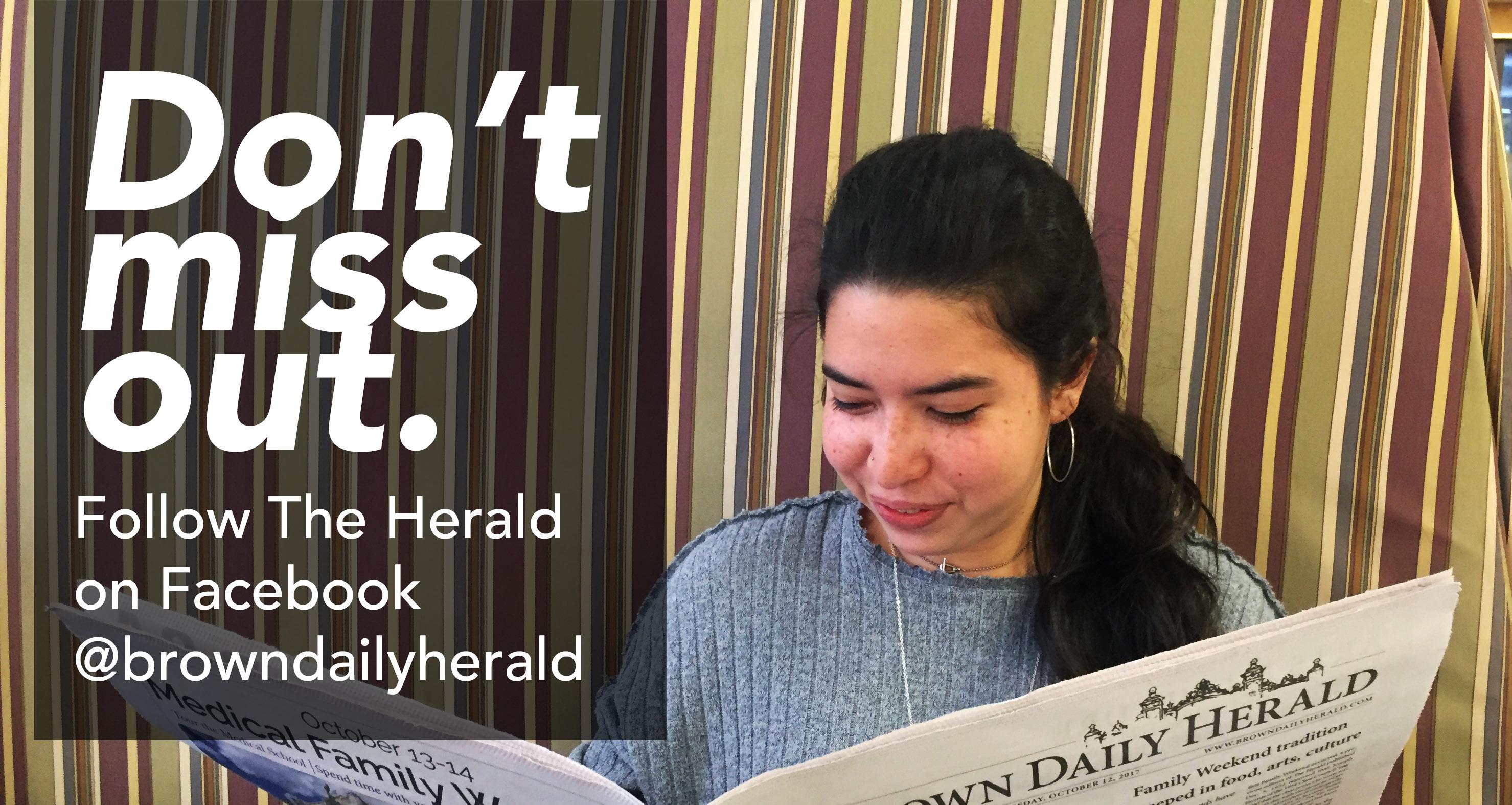
The Brown Arts Institute and Department of Modern Culture and Media hosted TRAXXX, an event consisting of a performance by artist-scholar and DJ madison moore followed by a conversation with Professor of Modern Culture and Media Alexander Weheliye, at the Granoff Center for the Creative Arts Thursday.
moore, who is an assistant professor of critical studies at the Roski School of Art and Design at the University of Southern California, creates work that investigates “the aesthetic, sonic and spatial strategies queer and trans people of color use to both survive and thrive in the face of rolling catastrophe,” according to the event description. While piecing tracks together, moore asks themself, “Does this make me want to get up and dance?” they said at the event.
Audience members were invited to dance as moore performed for an hour. Their performance sequenced different tracks, pulling from popular music and incorporating voice recordings. Behind the turntable, footage of 1970s and 1980s clubgoers in Black, queer nightclubs mixed with vibrant techno visuals.
The event followed a discussion earlier in the day between moore and students in the graduate course “Frequencies of Black Life,” taught through the Brown Arts Institute for students at Brown and Princeton. The course is taught by Weheliye in conjunction with Tina Campt, professor of humanities at Princeton.
The course has three “thematic strands,” one of which is musical “frequency in relation to Black sound,” Weheliye said. “It made sense to invite” moore considering the thematic focus of the course and the importance of bridging “the divide between schol-
arship and artistic practice” within modern culture and media and higher education overall.
“It was important for the students in the class to see someone who is a scholar but also a practitioner,” Weheliye said.
Audience member David Carre thought “the space felt very Black and queer” at the event.
They found it “interesting to think about the marriage of theory and praxis,” something moore also addressed in the conversation with Weheliye. Academia does not always
embrace “fugitive practices, yet here we are thinking through what it means to keep techno Black and queer” from scholarly and artistic perspectives, they added.
During their performance, moore thought about Black and queer nightlife through track sequencing, they said in their conversation with Weheliye. When thinking about the disappearance of Black and queer nightlife, sound systems also function as a space of worldbuilding and togetherness, they explained.
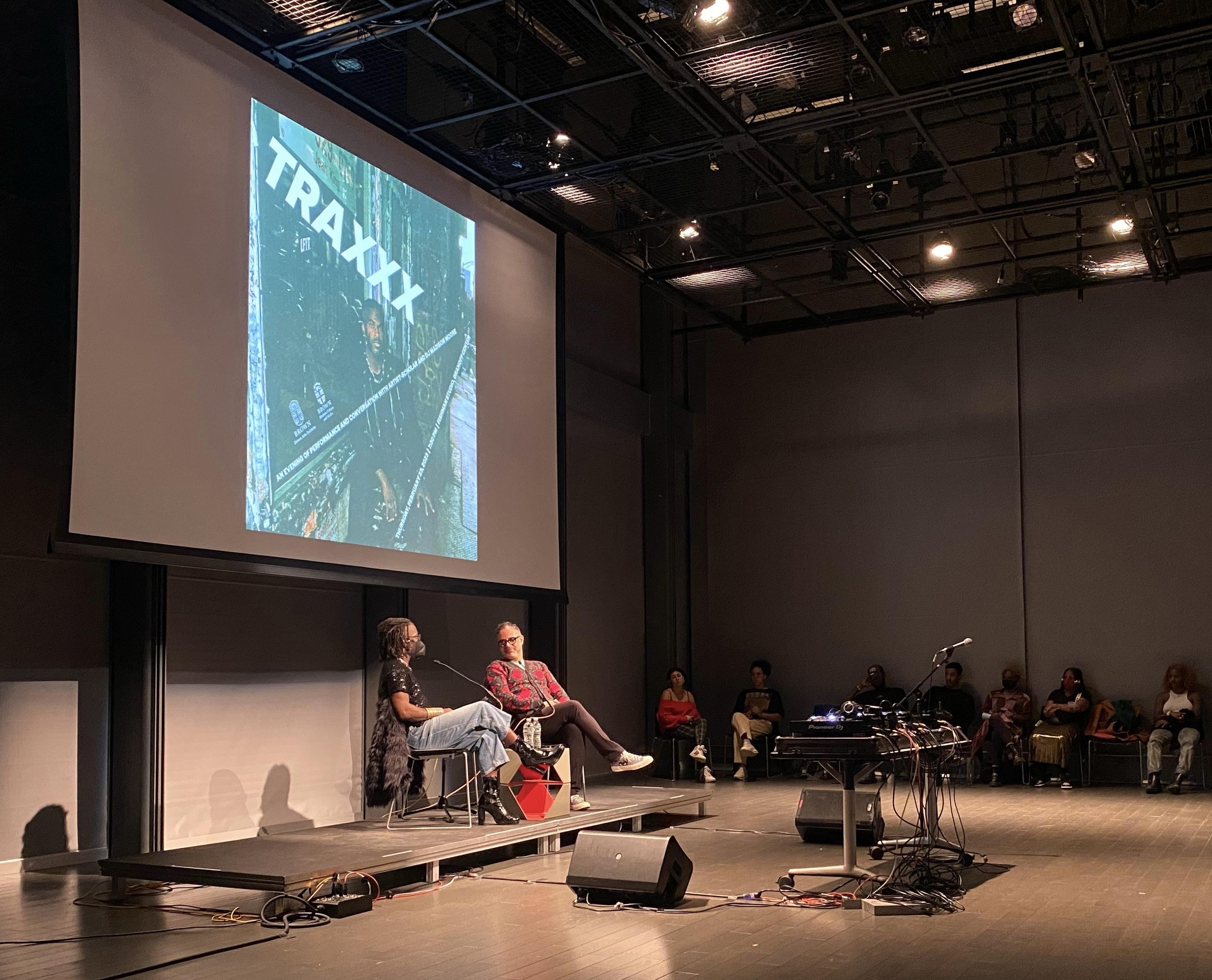
“Club spaces have always been
really important … in terms of how one perceives sound,” Weheliye said. Throughout “Black, queer (and) trans histories,” clubs have also functioned as “a safe space.”
There is a challenge in representing “subcultural spaces without spectacularizing or giving away too much,” moore said. Weheliye thinks that means “preserving those spaces while at the same time building on them” instead of just recreating them.
For Amon Pierson, a graduate student at Princeton, hearing moore discuss disappearing nightlife spaces
and their “ephemeral nature” made him think about “the importance of having these spaces, but also the fact that they’re not supposed to last forever.”
moore said they endeavor to represent the embodied experience of music and nightlife by incorporating interviews into their tracks. “The most beautiful thing is people sharing their club experiences,” they said.
“That sense of embodiment that you get from inhabiting the club space is really special, and I think that’s something that we should cherish more,” Pierson said.
discusses history, vestige of Black, queer nightlife following live performanceRYAN SMITH / HERALD Amon Pierson, a graduate student at Princeton who attended the event, explained that “the sense of embodiment that you get from inhabiting the club space is really special, and I think that’s something we should cherish more.”
al development and coherent, quality curriculum.”
Maribeth Calabro, president of the Providence Teachers Union, said she has not seen much improvement resulting from the state takeover.
“Under the takeover, there have been so many missteps and miscommunications,” Calabro added. “There’s been very little progress in what was promised from the commissioner. I think the sooner we get a plan together to return to local control, the better off we’re all going to be.”
According to Morente, the state’s Turnaround Action Plan was “crafted with the community” and incorporated “reports on the intervention, including information on what PPSD has done to engage and improve communication with the community.”
Community engagement
As the city and state look toward the future of PPSD, “it is critical that we align our priorities with what our students and families need,” Smiley wrote in an email to The Herald. In January, the Smiley administration hosted an education workshop to better understand educational priorities among teachers, parents, students and alumni.
“I truly appreciated the fact that one of the first things, if not the first thing, that Mayor Smiley did immediately following his inauguration was to bring together the community,” Calabro said of the event.
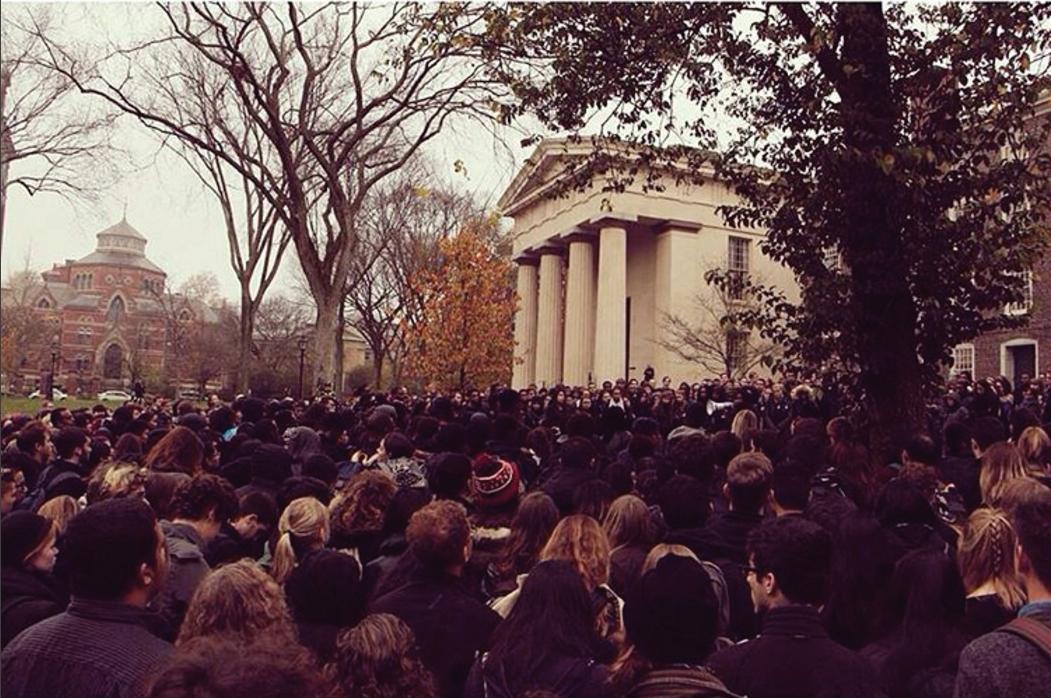
At the end of the event, the information that was gathered from each of the workshops was put into a document and sent out to participants. “Not only did they listen, but they took our information and codified it,” she added.
“Centering the voices of Providence families is critical to building a better school system and we will continue to make this process as inclusive as possible,” Smiley wrote. “I am meeting with stakeholders from every part of the education system to build those relationships and engage them in the path forward.”
Teacher shortage, curriculum development

A summer 2022 update on the Turnaround Action Plan stated that there were 213 new PPSD hires as of May 2022. But according to Calabro, PPSD has already seen 98 teacher resignations in the 2022-23 academic year.
Calabro said that PPSD administration is top-heavy and the state must move away from filling the roles of upper-level district leaders to instead address the teacher shortage.
According to Morente, teacher shortages are not just limited to Providence. “There is a nationwide education workforce challenge.”
He referenced an American Federation of Teachers report which found that, even before the pandemic, “nearly 300,000 teachers were leaving the profession each year, and schools were also facing persistent shortages among the school support staff who play such a
vital role in every child’s school day.”
Calabro also wants the district to address strategies for curriculum development for students and support the improvement of reading and math programs. Additionally, Calabro believes in improving financial literacy and ethnic studies offerings for students. “By offering a wide variety of choices for (students) to investigate, explore (and) discover, they can find what their calling is,” Calabro said.
“Per state law, financial literacy is a requirement,” Morente said, adding that RIDE’s Council on Elementary and Secondary Education recently approved new standards for social studies.
Smiley said he is also focused
Follow us on Instagram!
on improving opportunities beyond the classroom. “I want to grow outof-school-time learning opportunities so that students have access to a well-rounded education and attain skills they will need as they enter the workforce or higher education,” Smiley said.
In addition to increasing these opportunities, another of Smiley’s goals for the district is to invest in and improve school facilities.
Hopes for collaboration
In a January letter reviewed by The Herald, State Commissioner of Education Angélica Infante-Green and Superintendent Javier Montañez expressed
that they were looking forward to working with the Smiley administration.
“There is no doubt that we have more work to do,” Infante-Green and Montañez wrote to Smiley. “We look forward to collaborating with your administration and Providence stakeholders to build on the strong foundation we have established as part of the Turnaround Action Plan and ensure Providence Public Schools continue to move forward and thrive.”
“We are working very closely with the superintendent and the commissioner of education to make sure we are making progress in the turnaround so that Providence will be prepared for a return to local control,” Smiley wrote.
Men’s hockey ties 2-2 against Colgate in final game of season
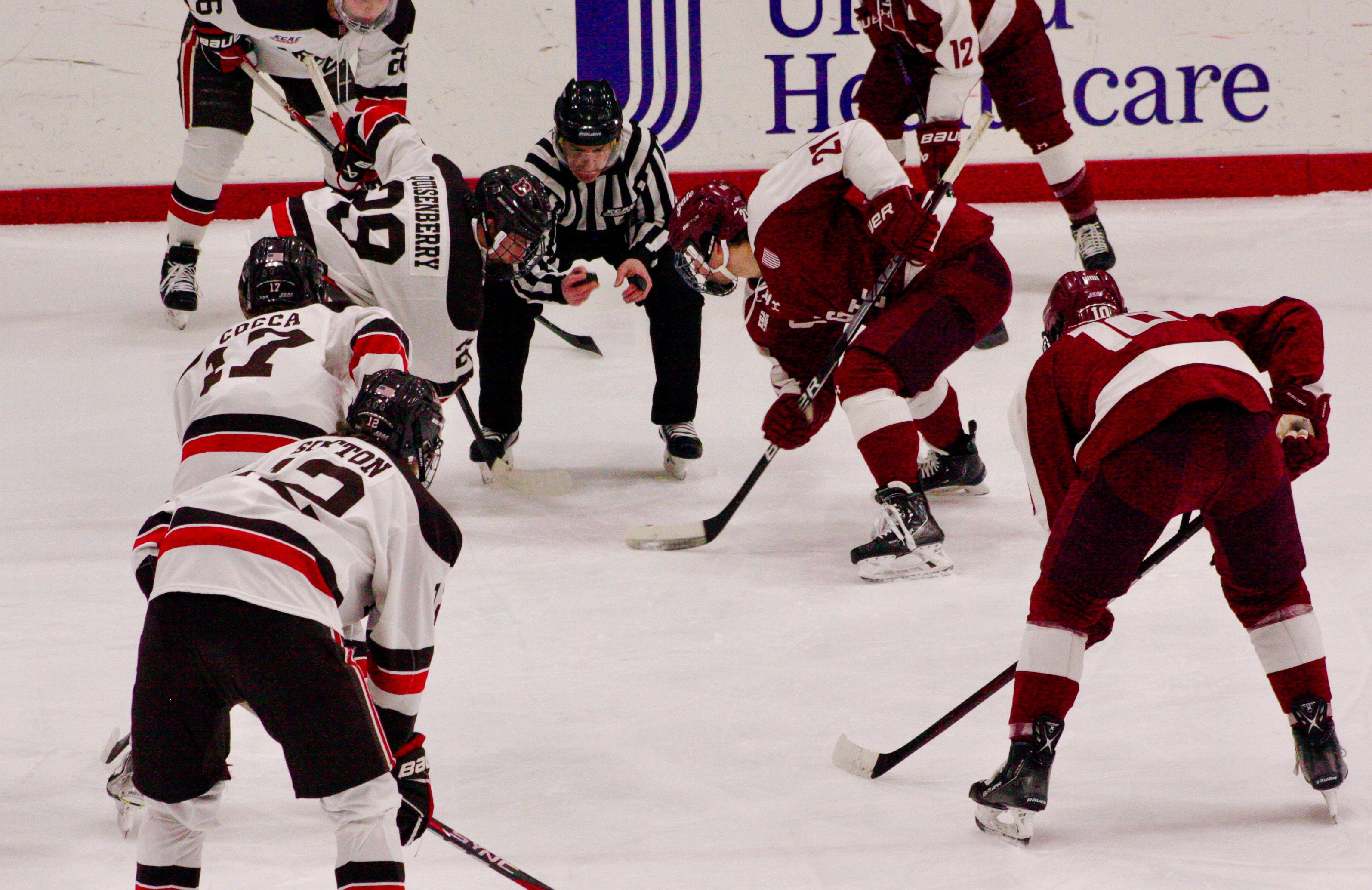
Team honors 10 seniors in their last game at Meehan Auditorium
Saturday
BY AUSTIN XIANG STAFF WRITERThe men’s hockey team (9-17-3, 5-14-3 ECAC) tied against Colgate (14-15-5, 11-8-3 ECAC) in a 2-2 battle Saturday night, with Colgate winning the shootout and securing the extra point in the Eastern College Athletic Conference standings. The Bears were coming off a 5-0 loss the previous night against Cornell, which is ranked No. 13 in the country.
The team “did a good job in terms of responding (to) what was an awful night for us,” said Head Coach Brendan Whittet ’94. “We gave ourselves an opportunity to win.”
Brown and Colgate last went head to head in November, when the Colgate Raiders won 3-2 in a close overtime battle. Coming into this game, Whittet said that he knew the Bears were facing
a “skilled” team.
“They have an outstanding power play. They have one of the best forwards in the league in (Alex) Young,” Whittet said, adding that the Bears’ defense improved dramatically following the match with Cornell.
Around 10 minutes into the first period, Bears defenseman Brett Bliss ’25 was sent to the box for a tripping penalty. Less than two minutes later, a penalty for interference on James Crossman ’23 gave Colgate a brief 5-on-3, but Bruno survived both power plays and the game remained scoreless.
The Bears got on the board in the second period when Ryan Bottrill ’26 found an open Jordan Tonelli ’24 in front of the opposing goal. Tonelli fired a shot past three Colgate defenders and the left side of the goaltender.
It was “just a really good job by my linemates,” Tonelli said of his goal, adding that Nathan Plessis ’23 “won a battle, got it to Ryan Bottrill, and he just found me in the slot, and I got lucky it went in.”
Around five minutes later, the Bears took a two-point lead, with Jonny Rus-
sell ’23 scoring his sixth goal of the year, assisted by Ryan Shostak ’26 and captain Luke Krys ’23.
“The puck was kind of bouncing around the boards, so I pounced on it,” Russell said. “We had a threeon-one and (I passed it) to (Shostak). (Shostak) gave me a nice pass back and I managed to squeak it in.”
But the two-point lead was shortlived. An unsportsmanlike conduct call on Tonelli gave the Raiders a power play, allowing Colgate’s Ethan Manderville to score by deflecting a shot from teammate Nick Anderson.
Not long after, Colgate’s Matt Verboon redirected an initial shot from the left point, sneaking it by the right side of Bears goalie Mathieu Caron ’25 and tying the game at two points apiece.
“We got a little bit deflated after their two back-to-back goals, but we came into (the) third period with a ton of confidence,” Krys said.
A back-and-forth third period went scoreless and the game headed to overtime, which saw a hooking penalty on Young just 28 seconds in. But
Raiders goalie Carter Gylander blocked three power play shots from Brown to keep the game tied. Colgate had an opportunity to end the game on a last-second shot in transition from forward Ross Mitton, who skated past all of the Bears’ defenders, but Caron trapped the puck under his leg pads as time expired.
“I will say (Caron) is the best goalie in the league,” Whittet said. Caron returned on Friday against Cornell after missing the last six games. “He’s our MVP. He gives us an opportunity to win every time he’s in.”
In the shootout, Brown sent Tonelli, Samuli Niinisaari ’23 and Bradley Cocca ’23 to take the team’s shots. Tonelli and Niinisaari failed to score against Gylander. On the other side of the rink, Caron saved a shot from Manderville.
Verboon took the fourth shot of the shootout. His attempt was originally ruled unsuccessful, as it appeared to hit the bottom of the crossbar and deflect out. But after a replay review, the call was overturned, as the referees said the shot hit the net instead of the crossbar.
Cocca failed to match Verboon’s shot and Colgate won the shootout, taking two out of the game’s three points in the ECAC standings.
“We wish we would have come out with the dub in the shootout or possibly even earlier, but with a lot of seniors’ last time playing at Meehan it’s a little emotional,” Tonelli said.
Saturday marked the team’s senior night. The Bears celebrated their 10 seniors after the game in front of the home crowd.
The team’s seniors “are good hockey players, but they’re even better guys,” Whittet said. “They’re people that I like to be around and people that are just a team first and do everything in their power to help Brown when we step on the ice — when we put on the uniform to perform.”
Brown will go on the road for their first-round playoff game Saturday against Clarkson (15-15-4, 9-10-3 ECAC) in Potsdam, New York.
“We’ll definitely game plan specifically for Clarkson,” Russell said. “If we do what we need to do, we can beat anyone.”
tive bracket and they did not just defeat the competition — they dominated it.
The men’s team swept both Boston University and the University of Chicago 9-0 in the opening rounds to advance to the finals, where they beat Georgetown 8-1. The team dropped just eight individual games — and only lost one match — while winning 79 over the course of the weekend.
On the women’s side, the team swept Colgate in the first round — going a perfect 27-0 in their individual games in the process — before defeat-
ing Northeastern 8-1 and Boston College 7-2 to earn their championship.
The team finished the tournament 73-12 in individual games.
“We were expected to win,” Dowling said. “And we did.”
Dowling noted that Brown’s participation “takes away a chance from other club teams to be able to win club nationals” because the University’s team includes recruited athletes.
“It’s not fun for anybody to have that big of a skill gap,” Roshkoff said, adding that several players from the opposing teams said that Brown’s participation in the championships
was “ridiculous” and that they were “trying to push to get” Brown out of the tournament.
But “at the end of the day, this is a national tournament,” Roshkoff added. “I’m gonna play at the level I would have played (at) if it was varsity.”
Several players from the teams, including Amin, Dowling and Roshkoff, will be returning to Philadelphia next weekend for the national doubles championships and individual championships. These tournaments will give them an opportunity to face off against varsity-level competition.
Among the participating players, Rachel Mashek ’24 and Roshkoff will attempt to defend the pair’s mixed doubles title from last spring, while Mashek and Danielle Benstock ’23 look to avenge their loss in the previous year’s doubles championship game.
“We had really good results last year,” Dowling said. “So we’re excited to hopefully do that again and continue to try to make a statement about our ability to compete with varsity teams.”
While their status may have changed, members said the teams’ dedication to excellence in the sport
— and the strong bonds of camaraderie between them — has remained consistent, serving as a key factor in their continued success.
“The level of commitment that is required is much greater than most other club teams,” Dowling said. “We practice every day of the week — a lot of early morning practices, a lot of traveling (and) we had a ton of matches this season.”
“We stayed strong and stayed together — and it’s paid off, as we’ve seen this year,” Amin said. “Even with the bumps along the road, we’ve gotten through it together.”
Affirmative action may be off the table — but legacy admissions are not the answer
With the Supreme Court poised to strike down race-conscious admissions, Brown is considering a number of alternative strategies to uphold student body diversity without affirmative action. Associate Provost for Enrollment Logan Powell, at a recent panel, suggested that the University rely on legacy admissions — the practice of giving the relatives of alumni an advantage in admissions — as part of its response. But this plan would fail to ensure the campus diversity Brown seeks to uphold and perpetuate socioeconomic inequities on campus. Further reliance on legacy admissions should have no place in Brown’s overall response to the end of affirmative action.
Powell argued that Brown has admitted “increasingly diverse classes of students, which means that their children are increasingly diverse.” The argument here seems to be that, by increasing legacy admissions, the University could generate a trickle-down form of diversity, where enrolling the children of alumni allows student demographics of coming generations to reflect previous ones.
Dubbed “affirmative action for whites” and “affirmative action for the rich,” legacy admissions have historically perpetuated socioeconomic disparities. First instituted in response to an increase in Jewish and Catholic applicants to top American universities, legacy admissions have since been giving a significant leg up to students who, by definition, have highly-educated parents, likely with high-paying jobs.
Brown students have long opposed legacy admissions at Brown, through campaigns like #LeaveYourLegacy and groups like Students for Educational Equity. Student group leaders have described legacy admissions as reinforcing “a cycle of inequity.” It is ironic that Brown would now offer the policy as part of a solution to the exclusivity and inaccessibility of higher education when Brown students have spoken against the practice for contributing to precisely that issue.
Powell indirectly demonstrated this at the panel: he said that one-third of the legacy students and student-athletes on campus self-identify as students of color — but failed to mention that this is in comparison to the 48% of the class of 2025 that do. In other words, legacy admits are substantially whiter than Brown’s overall student body. The level of diversity that legacy admissions could sustain is ultimately still a significant step down.
However, perhaps the most troubling consequence of turning to legacy admissions is that such a move fundamentally misunderstands the function of affirmative action in the first place. Race-conscious admissions, the policies we recognize today as affirmative action, were designed to address historical inequalities in the education system that prevented students of color and first-generation college students from applying and matriculating at highly selective colleges. These policies were about racial equity, certainly, but also about socioeconomic equity. They acknowledged how the history of American racial politics has consolidated wealth in white households and reinforced race- and class-based disadvantages that require active correction.
Even if Brown’s legacy admits are more racially diverse in 2030 than they were in 1960, it does not change the fact that legacy admissions privilege the wealthy. This favoritism directly contradicts the historical purpose of affirmative action, as well as what Brown set out to do in 1969 when it pledged to recruit an undergraduate class that was representative of the national population, after a 1968 walkout by 65 Black students protesting the lack of diversity in admissions. The University at the time explicitly pledged to recruit additional Black applicants from “all economic and social levels.” This was an acknowledgment that a Brown education does not only belong to white students, nor does it only belong to those who can afford SAT prep classes nor to those whose parents walked through the Van Wickle Gates.
Even if we ignore the practical failings of Powell’s argument for legacy admissions, we cannot dismiss what affirmative action is about at its core — the just reallocation of resources. Legacy admissions might help maintain some level of diversity on campus, but they fail to fully represent why diversity, racial or otherwise, is important.
So, if affirmative action is taken off the table and legacy admissions won’t meaningfully ensure diversity at Brown, what should the Office of Admissions emphasize instead?
As it turns out, there are a number of measures that the University is already considering to draw in talented students from across the country, rather than from within alumni families. As Powell noted during the panel, expanded recruitment in southern and southwestern cities in partnership with Howard University will allow the University to reach students from a wider variety of geographic and socioeconomic backgrounds, increasing the diversity of the overall applicant pool. Furthermore, Brown must continue to invest in the students of color, as well as first-generation, low-income and undocumented students who are already on campus, by providing resources to the Brown Center for Students of Color and the U-FLi Center. These represent more promising paths forward than doubling down on legacy admissions.
Editorials are written by The Herald’s Editorial Page Board. This editorial was written by its editor Kate Waisel ’24 and members Irene Chou ’23, Yasmeen Gaber ’23, Tom Li ’26, Jackson McGough ’23, Alissa Simon ’25 and Yael Wellisch ’26.
SINCE 1891
THE BROWN DAILY HERALD
133rd Editorial Board
Editor-in-Chief
Will Kubzansky
Managing Editors
Katy Pickens
Alex Nadirashvili
Senior Editors Augustus Bayard
Caleb Lazar
Peter Swope
Kaitlyn Torres
Post- Magazine
Editor-in-Chief Kimberly Liu
News Metro Editors
Emma Gardner
Rhea Rasquinha
Jacob Smollen
Julia Vaz
Science & Research Editor

Haley Sandlow
Senior Science & Research Editor
Gabriella Vulakh
Arts & Culture Editors
Aalia Jagwani
Finn Kirkpatrick
Rya Vallabhaneni
Sports Editor Linus Lawrence
University News Editors
Sofia Barnett
Charlie Clynes
Emily Faulhaber
Grace Holleb
Sam Levine
Neil Mehta
Haley Sandlow
Kathy Wang
Digital News Director of Technology
Swetabh Changkakoti
Opinions
Editorial Page Editor
Head Opinions Editor
Alissa Simon
Opinions Editors

Anika Bahl
Bliss Han
Melissa Liu
Jackson McGough
Multimedia
Illustration Chief
Ashley Choi
Photo Chiefs
Elsa Choi-Hausman
Dana Richie
Photo Editors
Mathieu Greco
Claire Diepenbrock
Rocky Mattos-Canedo
Lilly Nguyen
Kaiolena Tacazon
Social Media Chief
Sahil Balani
Social Media Editors
Emily Faulhaber
Kaiolena Tacazon
Production
Copy Desk Chief
Brendan McMahon
Design Chief
Neil Mehta
Design Editors
Sirine Benali
Maddy Cherr
Ashley Guo
Gray Martens
Business General Managers
Joe Belfield
Andrew Willwerth
Sales Director
Alexander Zhou
Finance Director
Eli Pullaro
Submissions: The Brown Daily Herald publishes submissions in the form of op-eds and letters to the Op-eds are typically between 600 and 900 words and advance a clear argument related to a topic of campus discourse. You can submit op-eds to opinions@browndailyherald.com.
Letters to the editor should be around 250 words and respond to an article or column that has appeared in The Herald, or critique or commend The Herald’s editorial decisions. You can submit letters to the editor to letters@browndailyherald.com.
Submissions undergo multiple rounds of editing. These rounds of editing generally take place over the course of one evening, and you may have to respond to edits late in the evening. If you know you will be unable to do so, please mention that in your email, and we will do our best to work with you.
Submissions can build on reporting from The Herald, reporting elsewhere, official statements from the University or other groups and other reputable sources, but they cannot break news or contain information that The Herald cannot verify. Because we cannot publish unsubstantiated information, failure to provide appropriate sources may mean we have to modify or remove unverified claims.
The Herald will not publish anonymous submissions or submissions authored by organizations. Leaders of student organizations can be identified as such but cannot write under the byline of their organization. The Herald cannot publish all submissions it receives and reserves the right to edit all submissions.
All submissions to The Herald cannot have been previously published elsewhere (in print or online — including personal blogs and social media) and must be exclusive to The Herald. Once your submission is published in The Herald, The Brown Daily Herald, Inc. owns the copyright to the materials.
Commentary: The editorial is the majority opinion of the editorial page board of The Brown Daily Herald. The editorial viewpoint does not necessarily reflect the views of The Brown Daily Herald, Inc. Columns, letters and comics reflect the opinions of their authors only.
Corrections: The Brown Daily Herald is committed to providing the Brown University community with the most accurate information possible. Corrections may be submitted up to seven calendar days after publication. Periodicals postage paid at Providence, R.I. Postmaster: Please send corrections to P.O. Box 2538, Providence, RI 02906.
Julian Beaudry
Kate Waisel
@the_herald facebook.com/browndailyherald
@browndailyherald @browndailyherald
Advertising: The Brown Daily Herald, Inc. reserves the right to accept or decline any advertisement at its discretion. 88 Benevolent, Providence, RI (401) 351-3372 www.browndailyherald.com Editorial: herald@browndailyherald.com Advertising: advertising@browndailyherald.com
The Brown Daily Herald, Inc. is a financially independent, nonprofit media organization bringing you The Brown Daily Herald and Post- Magazine. The Brown Daily Herald has served the Brown University community daily since 1891. It is published Monday through Friday during the academic year, excluding vacations, once during Commencement and once during Orientation by The Brown Daily Herald, Inc. Single copy free for each member of the community. Subscription prices: $200 one year daily, $100 one semester daily.
Copyright 2023 by The Brown Daily Herald, Inc. All rights reserved.
This week, undergraduate teaching assistants in Brown’s Department of Computer Science will vote to determine whether the Brown administration must legally recognize and bargain with our union, the Teaching Assistant Labor Organization. We are pursuing unionization because we believe in democracy, justice, equity and a spirit of collaboration, care and community. These values stand in contrast to how the department is currently run, as it’s no secret that the program is riddled with difficulties surrounding TA working conditions. We implore CS TAs to vote “yes” this week to improve our workplace and our community by winning the first undergraduate union on campus.
Today, CS TAs must often and unfairly choose between their responsibilities as workers and their lives as students and people. TAs serve as the face of their courses, sometimes even playing the role of professors. This is not just because our CS TAs are hardworking and ambitious, but rather because they are overworked and exploited. For example, the head teaching assistant job description explicitly instructs TAs that they “should do whatever (they) feel is important to keep the class running smoothly,” leaving no room to consider the intense pressure and emotional burden that comes with that responsibility. The department fosters an environment where working overtime is not always a choice, but an obligation — the alternatives are either burdening their fellow TAs with more work or letting students suffer the consequences.
These issues could seem like acute one-offs or just fallout from the COVID-19 pandemic. Unfortunately, this couldn’t be further from the truth. In 2019, Arthur Borém ’20 led a shortterm research project studying the CS TA program, which resulted in a research paper co-authored with the Sheridan Center’s Associate Director for Undergraduate STEM Development Christina Smith. It describes the tensions and pressures that TAs faced back then, and they’re nearly identical to the issues that TAs face today, four years later. TAs noted that “the presence and influence of professors (are) not guaranteed,” while developing course content. Similarly complex responsibilities, such as manag-
ing grades or writing rubrics, were performed “without training or guidance.” Just like today, TAs felt “like they (were) ‘failing’ their students when prioritizing their own schoolwork.”
In the same year, 2019, the University formed a working group composed of students and faculty from multiple different departments that reviewed University practices for all TAs, resulting in a set of revised guidelines that were approved in 2021. The working group included Borém and Smith as well as Tom Doeppner, the current vice chair of the Department of Computer Science. In the executive summary
systemic and unrelenting, and though we are not the first to realize this, our issues have persisted.
By building a union, we aim to address these issues by fighting against the continual churn of the undergraduate condition, which erodes institutional memory. As CS TAs, we are temporary workers in a deeply decentralized workplace. We’re spread across dozens of courses in a given semester, working in different roles, all with their own responsibilities and histories. Most TAs only work for one or two semesters and graduate in four years. While our union’s membership will change over time, TALO’s
challenge us to explore new ideas. We spend our free time studying for interviews, taking online assessments and building projects to put on our resumes. And, we accept course loads that quite literally have us working overtime — three CS courses in one semester can easily add up to more than 40 hours of work a week.
Interrupting this culture of overwork starts with our union. TA working conditions set an example for how all CS students expect to be treated as workers. As first-years, many of us looked up to our TAs as mentors and role models. But, when we see our mentors stay after hours or work while they’re not on the clock, we are implicitly told that overwork and a lack of boundaries are not only the norm — they are expected.
As TALO, we are organizing to protect students and TAs by fostering transparency and accountability. Currently, the department and University are under no obligation to include us in decisions that impact our everyday working conditions or even provide a transparent explanation of their decision-making processes.
of their review, the working group cited the issues identified in Borém and Smith’s paper and found that for TAs across the University, the situation was unacceptable.
The report noted that TAs were engaging in complex teaching practices, such as course development, without much support. There were also concerns about equity gaps, “access to TA opportunities themselves” and the administrative process: “There is not much consistency in regards to recruitment, hiring, training, and supervision of TAs.”
This report was revealing, but ultimately, the working conditions of TAs did not change. In Spring 2022, a group of TAs authored an open letter that they presented to administrators in the computer science department. Again, the same issues — overwork, inadequate pay, insufficient infrastructure — were outlined. But, other than winning a nominal pay raise, little changed.
The issues experienced by CS TAs today are
power to preserve our experiences and centralize our efforts — both formally and informally — will remain.
Winning a union is not just about looking to the past and securing better conditions for TAs — it’s also about protecting students’ futures. The work culture in college primes students to expect and accept mistreatment from employers. Tech companies seek workers who will put their jobs first, clock 80-hour weeks and run on little sleep and a lot of caffeine. Recently, we have been reminded of tech workers’ working-class positionality, as loyal senior developers and new grads alike are laid off as companies brag about record profits.
Brown facilitates this culture of overwork by asking students, TAs, faculty and staff alike to sacrifice mental and physical health for programming assignments, academic paper deadlines and recruitment cycles. As students, we find ourselves taking classes that we hope will teach us marketable technical skills rather than
A clear example of this is Brown’s recent decision to pause all TA hiring until after the March 2 union election. Not only did this unexplained move create an immediate headache for the meta TAs who oversee hiring, but it threatened to push hiring timelines into finals period and the summer. After public pushback against this decision, the administration opted to resume hiring. This is the power we wield when we stand together. This is the power of a union.
Voting “yes” for our union is the first step to building a department where TAs’ experiences are preserved and valued, where TAs have a real voice in their working conditions and where students receive the world-class CS education that Brown promises.
Ronnie Shashoua ’25 can be reached at ronnie_shashoua@brown.edu. Yasmine Abdelaziz ’25 can be reached at yasmine_abdelaziz@brown.edu. Joseph Maffa ’25 can be reached at joseph_maffa@brown.edu. Please send responses to this opinion to letters@browndailyherald.com and other opeds to opinions@browndailyherald.com.

Shashoua ’25, Abdelaziz ’25, Maffa ’25: CS TA unionization will improve democracy, institutional memory in our workplace
“The issues experienced by CS TAs today are systemic and unrelenting, and though we are not the first to realize this, our issues have persisted.”
Women’s basketball falls 83-55 to Columbia Lions on senior night
Kyla Jones ’24 scores 27 of Brown’s 55 points in loss to top-ranked Ivy team
BY DENNIS CAREY SENIOR STAFF WRITER

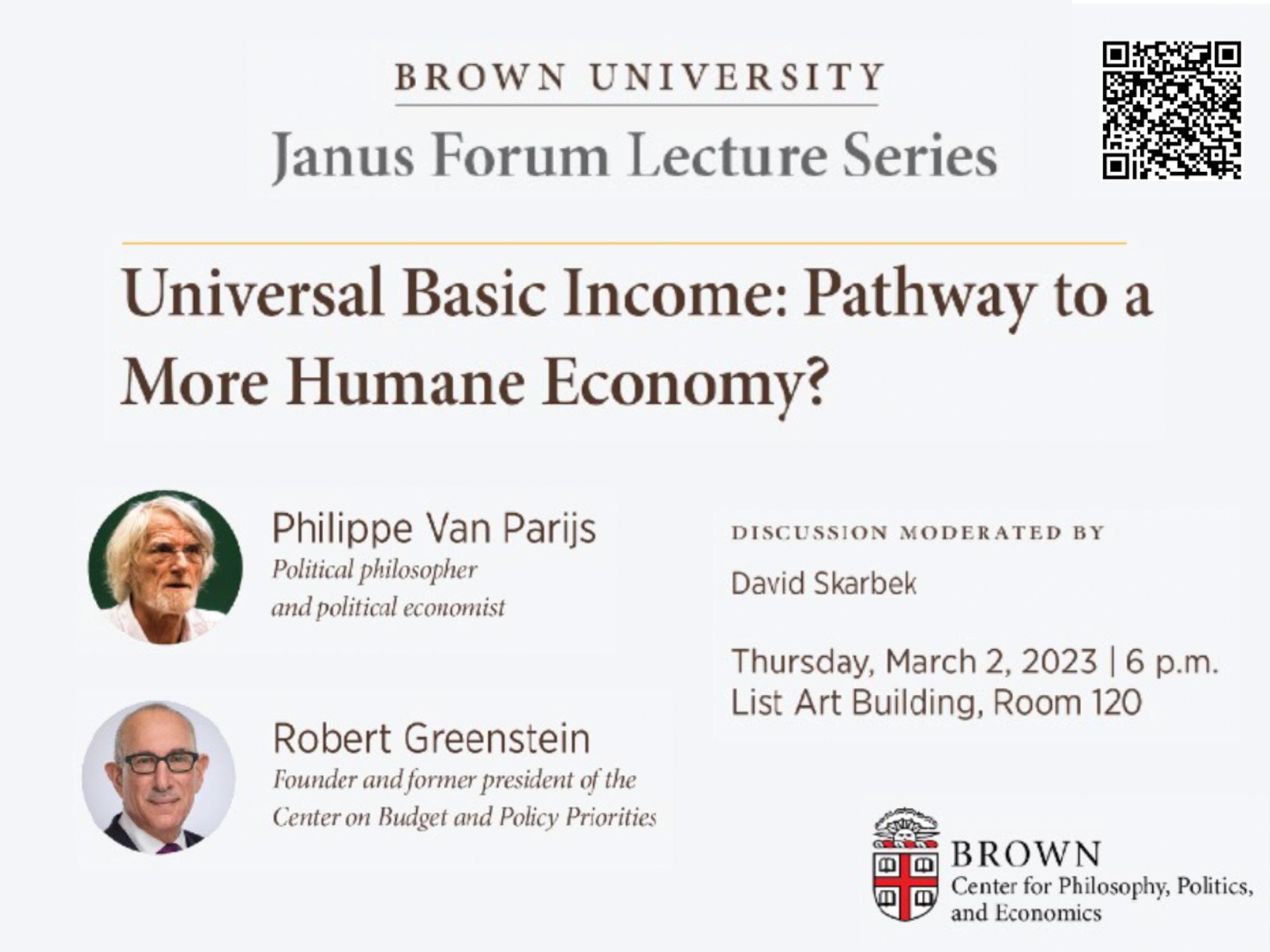
The women’s basketball team (11-14, 4-9 Ivy League) lost 83-55 in their final home game this weekend against the top-ranked Columbia (22-4, 11-2). The game was senior night for the Bears, where the team honored players Lexi Love ’23, Myla Cox ’23, Maddie Mullin ’23 and team managers Jeffrey So ’23 and Adiza Alasa ’23.
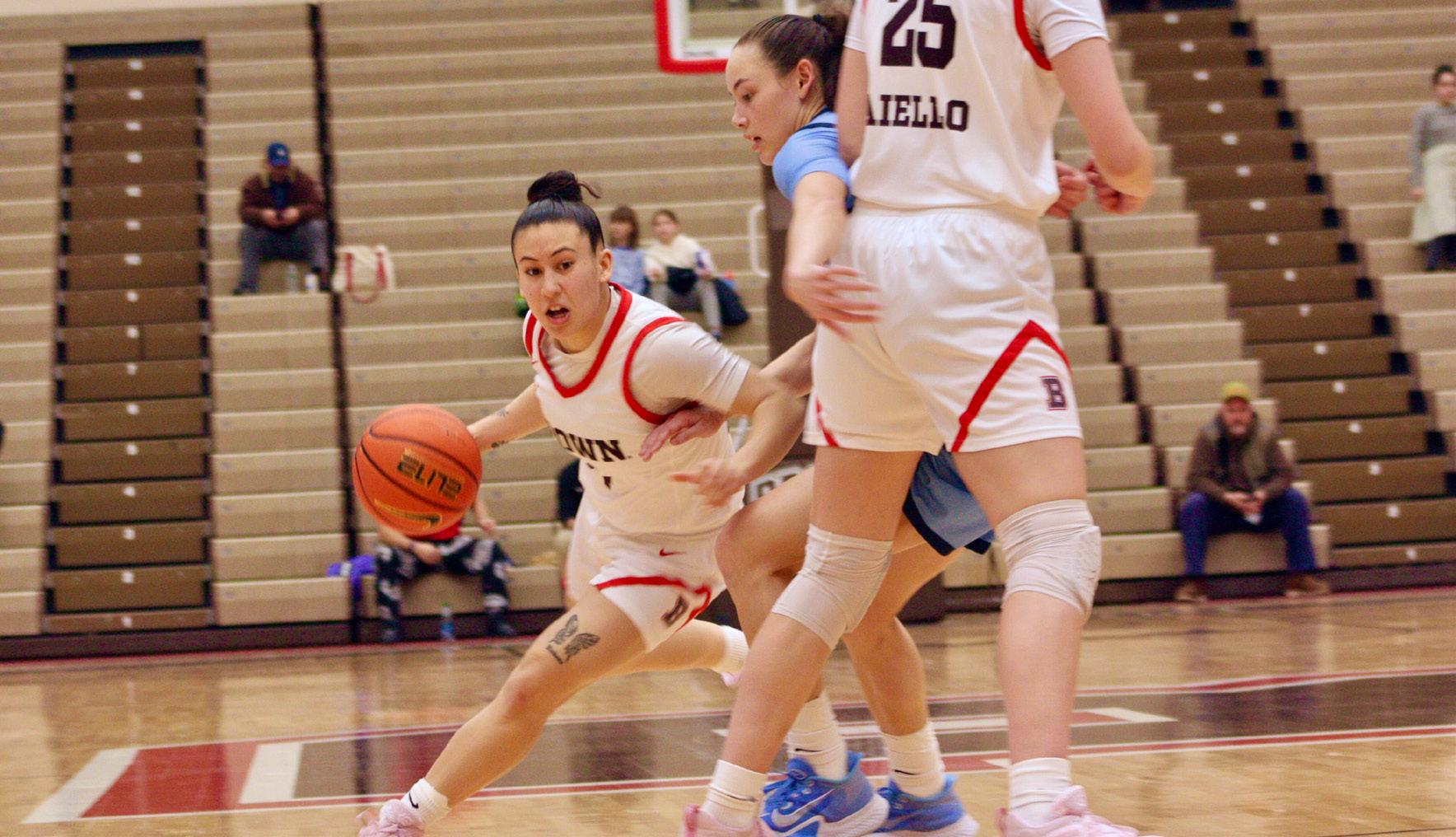
“This season was my favorite. I love my teammates. We had a lot of freshmen come in, but I really grew to like them a lot. It’s fun to play with players that have fun,” Love told The Herald after the game.
Brown’s performance was led by Kyla Jones ’24, who scored 27 points and had four steals in the 83-55 loss to the Lions.
“I just say to myself, I know I’m good at getting to the rim and I just have to keep the mindset that people can’t guard me,” Jones said.
The game started with seniors Love, Mullin and Cox in the starting lineup, who delivered Brown an early lead of 9-2.
“I thought (the seniors) played really, really hard today and … they’ve been great teammates and they were ready for this moment,” said Head Coach Monique LeBlanc. “They got us off to a great start … I was excited for them to be able to compete in front of all their family and friends.”
The Bears struggled in the first quarter, allowing a 20-0 scoring run for the Lions, giving them a 22-9 lead. Brown also allowed Columbia long possessions with multiple offensive rebounds. Columbia continued to remain ahead and finished the quarter up 24-14.
The Bears were unable to catch up to the Lions in the second quarter, conceding eight points on fast breaks. The Bears also dropped in shooting percentage, shooting at 42.86% — down from 50% in the first — and 33.33% from behind the arc, down from 50% in the first. Brown was outscored in the second quarter 22-14, putting them down 46-28 going into half-time.
The Bears came out stronger defensively in the third quarter, but they struggled with rebounds. Bruno
allowed for 10 second-chance points, which accounted for over half of the Lions’ 19 points in the third quarter.
“We held them to 37% of the field, 25% from three, but they turned 25 whole boards into 26 free throws,” LeBlanc explained. Columbia is “a really great team and the more chances they got led to us fouling ultimately,” she added.
The Bears’ offense remained stagnant as well, shooting only 1-9 from behind the arc, and making only six of their 16 shots in the third quarter.
Entering the fourth quarter the Bears trailed 65-42. Despite holding the Lions to 31.58% shooting during the final quarter, the Bears’ offense was unable to make up ground, and the game ended 83-55 for Columbia.
This game was the last at the Pizzitola Sports Center for graduating seniors, who will play their final game of the season next weekend at Yale.
“We have a lot of fun memories with them,” Jones said. “We couldn’t get enough of them, but I know they’re gonna do great things later on in life.”
Next week’s game against Yale will be streamed live on ESPN+.
